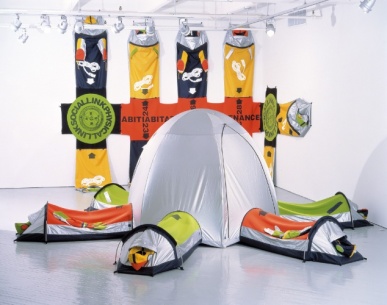Climate Refugees
As we look at the past approximately 250 years since the commencement of The Anthropocene being the Industrial Revolution, dramatic changes to our planet have occurred during this period. The large emission of greenhouse gasses causing climate change is a big issue that we as both humans and designers have to look at. As climate change over more recent times has caused a rise in the occurrence of natural disasters such as earthquakes and tsunamis; and devastation such as rising sea levels and flooding due to melting ice caps, we need to consider the effects not only to the environment and the planet but also have to understand, design and plan for future disasters and saving those who live in these high risk areas.
Environmental refugees are those who must leave their homes due to natural disasters. Climate refugees fall into this category as they too are forced to flee due to the effects of climate change – being increased flooding and natural disasters due to greenhouse gas emissions. As reported by The United Nations High Commissioner for Refugees, ‘36 million people were displaced by natural disasters in 2009…this number will rise to at least 50 million by 2050’ With this future prediction potentially devastating millions of lives, the need for survival plans, innovative designs and strategies for attack during devastation need to be developed and put into action by governments and corporations. The trailer for the movie ‘Climate Refugees’ is a great summary for the situation of these refugees that is currently happening and will continue to occur on our planet.
The article “Climate change refugees a reality” published by the Sydney Morning Herald raises the question of how do we plan for the displaced people of these devastated areas? One idea is to put forward the option of planned migration, moving those living in areas prone to the adverse effects of climate change to areas less likely to be affected by climate change. Some migration may be as simple as moving from a low lying area to higher ground in order to evade flooding however governments, in particular the Australian government needs to have a plan to accommodate for displaced people in the event of disaster to the neighbouring South East Asian countries, as Australia is closely situated to this region.
Looking at Lucy Orta’s piece labelled ‘connector motor village I’ a product like this would be greatly useful to environmental refugees who have been displaced in a time of disaster. This design is easy to transport and install making this item extremely practical in times of devastation. The product can be connected to other tents and rearranged to accommodate for more people. This product is also a much easier way to set up shelter and aid as it can accommodate for more people, particularly if an unexpected natural disaster occurred.
With an attempt at reducing greenhouse gas emissions, government planning and utilising innovative designs, climate refugees will be able to gain safety and security in areas less prone to natural disasters and devastation.
References
McDaniel, M., E. Sprout, D. Boudreau, and A. Turgeon. “Climate Refugee”, National Geographic Education. N.p., n.d. Web, viewed 16th September 2014
Nash,M. 2010, Climate Refugees Trailer, Video Recording, YouTube, Viewed 16th September 2014, <https://www.youtube.com/watch?v=28MH3jZlucc>
Orta,L., Studio Orta, UK, viewed 17th September 2014 <http://www.studio-orta.com/en/artwork/29/Connector-Mobile-Village-I>
Wahlquist A. 2014, ‘Climate change refugees a reality’, Sydney Morning Herald, 18th February, viewed 18th September 2014, http://www.smh.com.au/national/climate-change-refugees-a-reality-20140212-32hvu.html
Great video! Really grounds your argument in lived experiences of people. And the Lucy Orta piece provides a nice talking point for solutions!
– Alysse
LikeLike